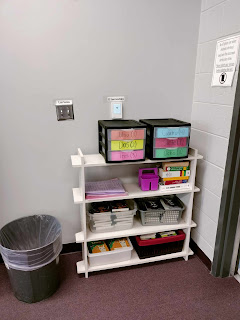Happy fall, everyone!
We are about a month into the school year here in Idaho, and this year is shaping up to be a challenging one for me. I love my school, my boss is great and I have a bunch of really sweet kids, but the challenge for 2023 is going to be: DIFFERENTIATION!
This year, my Spanish 1 classes are mixed 7th, 8th and 9th graders (about evenly mixed). I also have a large number of students with 504s, IEPs, behavior plans - students with everything from autism to ADD to Oppositional Defiant Disorder. In addition, I have quite a few native speakers and heritage speakers mixed in throughout my Spanish 1 and 2 classes.
All of this is awesome! I am so glad that so many diverse types of students are choosing to take world languages. However, it means that I need to do some serious differentiation if I'm going to reach a 7th grade boy with ADHD and a 9th grade Spanish-speaking honors student in the same class.
I've been working through a variety of ways to do this. For example, I typically have students complete a warm-up activity writing something we've been learning about recently. This year, however, I'm dividing it into sections: a shortened, basics-only warm-up that everyone can complete quickly, and a challenging sentence or two that push my higher-level students to apply a concept in a new way, or guess at a new vocabulary word.
Another lifesaver has been Barkelona, the comprehensible input video game that my husband and I have been developing over the past year. The last two Fridays, I've set students up playing Barkelona while I worked with small groups or individuals who needed extra assistance on assignments. I was also able to discuss a Spanish-language novel with one of my native speakers. While we were working, the other 85% of my students were highly engaged and stayed on task. I felt good knowing they were basically spending that whole time reading comprehensible input in the form of conversations with game characters. Some of them also taught themselves new words with the mini-games, such as numbers, foods and body parts. It even worked well as a behavior incentive for my student with ODD: he was willing to complete a missing writing assignment so he would have time to find the tomatoes for Chef Antonio in Barkelona. In his words, "This game is FIRE!" 😂🔥
To keep my native speakers engaged, I've been having them read short news articles on topics related to what the class is doing. Then, I ask them a few questions about what they read as a sort of mini-interview to share with the class. For example, last week my on-level students were discussing who does which chores in their house. As they interviewed each other, the native speakers read and discussed an article about the gender gap between boys and girls completing chores and how it mimics the gap between men and women's household labor. After they read, I asked them (while the rest of the class listened) "Ustedes leyeron un artículo del NYT. Según el artículo, quién hace más quehaceres en casa?" and "Quién recibe más dinero por sus quehaceres? Es justo o no es justo?" Then the entire class discussed their opinion of this phenomenon.
I need more ideas, though. What are your go-to differentiation strategies to ensure a good use of class time for all your students? Please comment with your favorites!




















